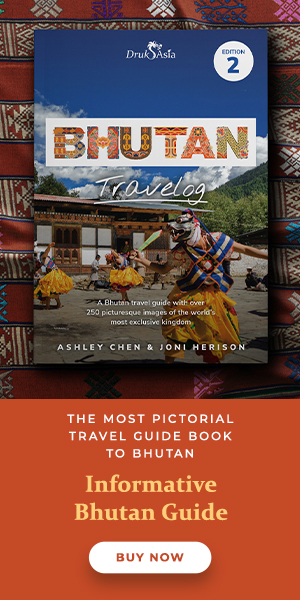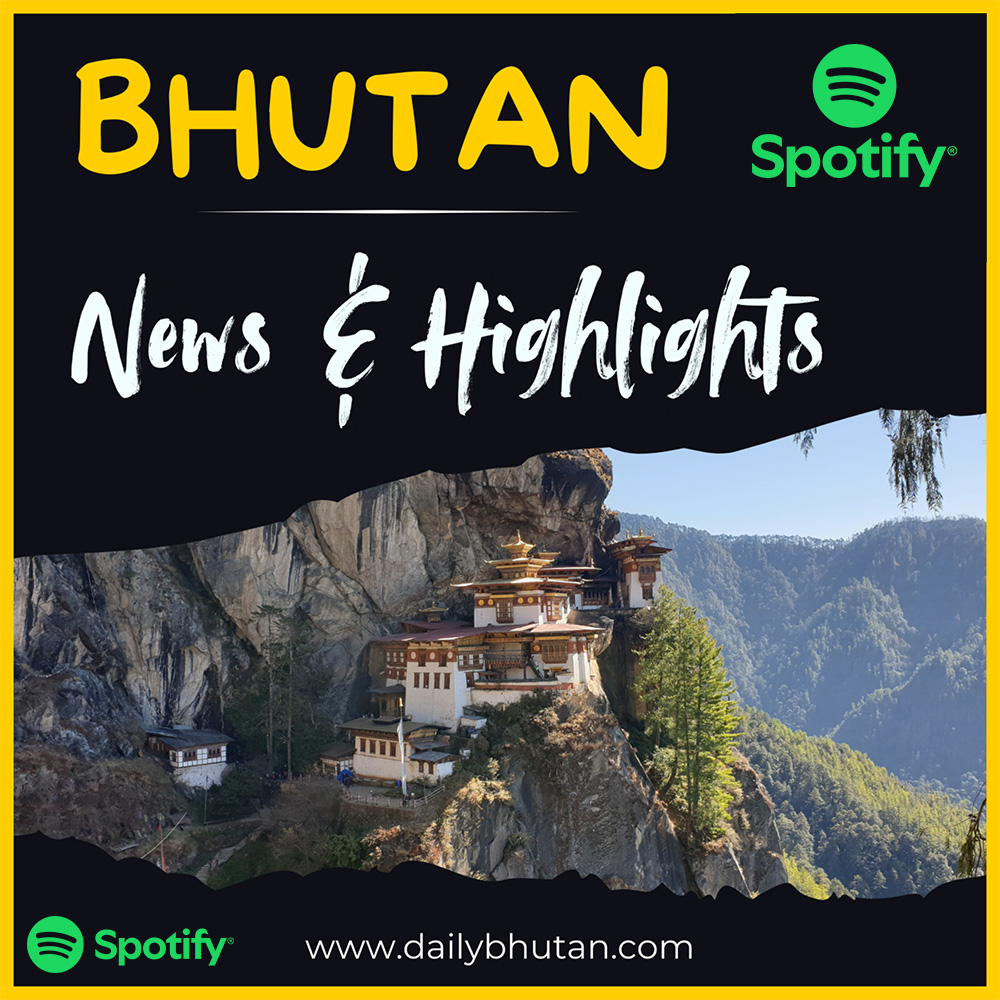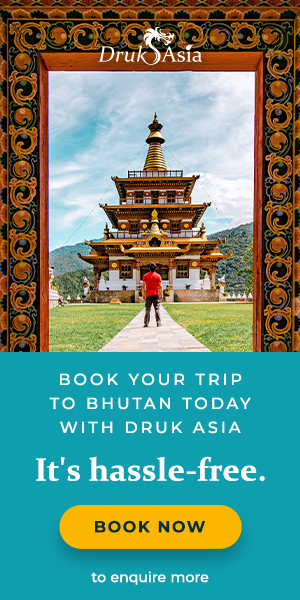The most prominent Buddhist deities in Bhutan
Buddhist statues and religious figures can be seen in most of the landmarks and historical sites in Bhutan.
Bhutan is known as the last Buddhist kingdom in the world. There are many reasons why tourists from around the world travel to Bhutan. One of the primary reasons is to explore the unique and distinctive culture. Aside from the unspoiled natural landscape, the spirituality aspect of Bhutan as a country is also gaining popularity amongst Buddhists all over the world.
Below are some of the most prominent deities and figures that you can find in the dzong (ancient fortress), lhakhang (temple), chortens (stupa), and sacred sites.
THE BUDDHA (Sangay Shacha Muni)
Shakyamuni Buddha is the historical founder of Buddhism. The term Buddha means ‘enlightened ones’ and is attributed to beings that have reached the highest level of enlightenment. There are many different depictions of Buddha including the twelve great acts of Buddha. But the most popular representation is the Buddha sitting in meditation with the right hand resting on the lap with the palm facing up, and left fingertips facing downwards "touching the earth". Also known as the 'Earth Witness" position, it symbolises the interdependence of everything that exists on earth.
There are over 100 different poses and representations of Buddha.
The poses and hand gestures of the Buddha convey different meanings.
GURU RINPOCHE (PADMASAMBHAVA)
Guru Padmasambhava, popularly known as Guru Rinpoche is one of the most revered historical figures in Bhutan. The great saint introduced Buddhism in Bhutan around the 8th century. Guru Rinpoche traveled the length and breadth of the country verifying that Bhutan is indeed the sacred land practising the teachings of the sacred Mantrayana or Vajrayana tradition
The iconic Paro Taksang (Tiger's Nest monastery) is known to be the home of this great Buddhist saint. Legend has it Guru Rinpoche flew to the site on a tigress' back and that's how the monastery got its name. According to the scriptures, Guru Padmasambhava is believed to have travelled to Bhutan twice via different routes. Most of the sacred sites visited are identified to be in central Bhutan, particularly Bumthang. Today, Guru Padmasambhava's statues are found in almost all temples and homes in Bhutan.
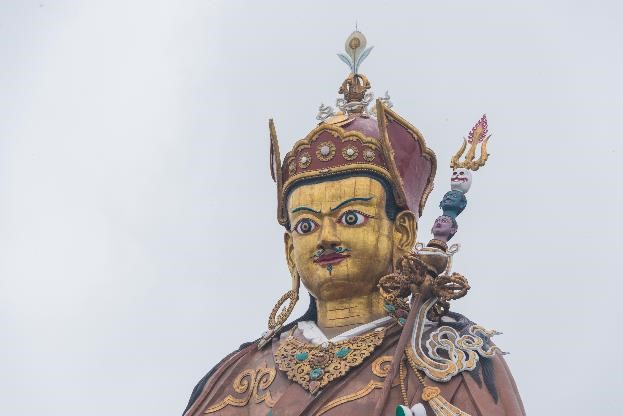
AVALOKITESHVARA (Chengrezig)
A bodhisattva (Jang Chub Sempa) is an enlightened being who chooses to remain within cyclic existence to benefit all beings. Avalokiteshvara or Chenrezig is a bodhisattva of inconceivable compassion. Avalokiteshvara is one of the most popular bodhisattvas in Buddhism. Also known as Guanyin in Chinese and Kannon in Japan.
There are many different ways in which Avalokiteshvara is portrayed. The supreme manifestation of this Bodhisattva of Compassion is the one with eleven heads and one thousand arms (Chak Tong Chen Tong). Each hand has a palm with an eye on it to 'see' the sufferings of humanity and to illuminate all beings with the light of wisdom.
MANJUSHRI (Jampelyang)
Manjushri (Jampelyang) is a Bodhisattva of Wisdom. Students in schools across the country start their day by saying prayers dedicating to Jampelyang. Manjushri is also known as the deity of astrology. In Buddhist artwork, Buddha is often depicted together with Manjushri, who represents the transcendental wisdom of Bodhisattva. Be it in statues or paintings, Manjushri is depicted in over a hundred manifestations signifying transcendental wisdom.
TARA (Dolma)
Similarly, there are innumerable manifestations of Tara (Dolma), one of the most beloved deities. Tara is also known as "Mother of liberation" and "goddess of compassion". There are said to be twenty-one taras and the two most popular ones are White Tara and Green Tara. It is said that these goddesses of compassion wept tears for the beings of samsara. One can differentiate between the two Taras by looking at the colour of the lotus held on their hand. Many believe that if the male pays homage to Tara and chants prayers, good things will befall the believers.
Under the patronage of Her Majesty the Queen Mother Sangay Choden Wangchuck, a temple dedicated to the Tara (Tara Lhadron Zhingkham Lhakhang) was constructed in Thimphu to generate tremendous positive Karma benefiting all sentient beings and bringing unwavering peace and happiness to Bhutan and the world as a whole.
ZHABDRUNG NGAWANG NAMGYAL
Zhabdrung Ngawang Namgyal was a great statesman and the architect and founder of the nation-state of Bhutan. He is known in Bhutan as the Father of the Nation. Zhabdrung Ngawang Namgyal was the person who unified Bhutan and established Drukpa Kagyu as the state religion although other Buddhist institutions were also allowed to flourish. He is also the person credited for the establishment of the beautiful Dzongs (ancient fortresses) that can be found throughout Bhutan. The first dzong that he built was Semtokha Dzong in 1629.
Zhabdrung Ngawang Namgyal is a highly respected historical figure in Bhutan. Bhutanese commemorates ‘Zhabdrung Khuchoe’ day on the 10th day of the third Bhutanese month every year. The occasion marks the day when Zhabdrung Ngawang Namgyal passed away at the Punakha Dzong in 1651. On this particular auspicious day, the Royal families of Bhutan visit Punakha Dzong to pay homage to Zhabdrung.
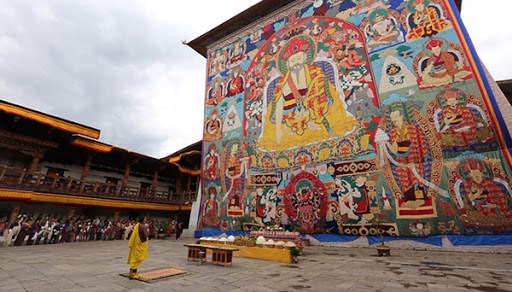
His Majesty Paying Homage to Zhandrung Ngawang Namgyal in 2020
